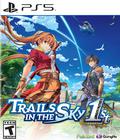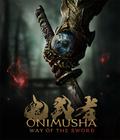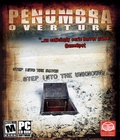Genre: Survival Adventure
Publisher: Got Game
Developer: Frictional Games
Release Date: May 7, 2007
Penumbra: Overture is a first-person horror adventure game that revolves mostly around exploring and puzzle-solving, but a bit of combat is mixed in for good measure. This is sort of a niche offering that you don't see very often; basically, it is reminiscent of Shivers or the Gabriel Knight games, only with more freeform puzzles. The adventure has a very creepy atmosphere akin to an H.P. Lovecraft story. The atmosphere and immersion are so paramount to the experience that the developers suggest you play in a quiet room, with all of the lights turned off, and with high contrast settings on your monitor.
You play as Phillip, who is investigating the mystery behind his father, who supposedly died 30 years ago. The father left a series of documents in a safety deposit box, detailing a hidden location in Greenland, where Phillip discovers an underground mine. The game takes you through the tunnels of this abandoned facility, and as you explore, you get hints that the miners found something here that was not of this earth.
During the course of your explorations, you will find journal entries, notes, and newspaper articles which help you piece together the narrative. The story seems well thought-out and proves to be interesting for the most part, though it does leave a few things to be desired. It does not detail any backstory on the main character, or why he decided to head off alone to an abandoned mine in Greenland. Many questions also go unanswered in the first episode, but perhaps the developers omitted the information so that it can be revealed in later episodes.
Although you play Penumbra: Overture entirely from a first- person perspective, it contains no shooting or projectile weapons of any kind. Much of the game focuses on figuring out where you need to go and determining what you need to do to get past an area or puzzle. Occasionally, you will encounter enemies which you can either kill or run away from. The controls take a bit to get used to; you can pick up objects by clicking and holding down on the left mouse button, and you drag them around by moving your mouse. Items like a hammer or pickaxe can be swung by holding down the mouse button and moving side to side to do a horizontal swing or up and down to perform a vertical attack.
The developers applied this control scheme to just about everything in the game. For instance, doors are not opened simply by clicking on them, but by grabbing and dragging them open with the mouse. This is a unique control style that I have not seen implemented in this way before. It works correctly most of the time, but sometimes you'll execute actions that you didn't mean to, or you'll spin around when you wanted to swing an object. This is especially noticeable when you engage in combat, but overall, the control scheme adds an interesting touch to the game and helps with the immersion.
The physics in Penumbra: Overture are quite good, and they allow you to interact with objects in rather intuitive ways. It seems one of the main focal points was to incorporate the physics system as core part of the gameplay. All of the puzzles and challenges were designed with this control scheme in mind, so there is rarely a needlessly repetitive challenge in the game. Each area introduces new objects and ways to interact with them in order to advance. Often, tips or instructions can be found in notes or journal entries, but the hints are sometimes a little too obvious, which takes away from the enjoyment of solving the dilemma. The puzzles are not of the contrived variety that you find inserted into traditional adventure titles, but are more organic in nature, and they appear seamlessly blended with the surroundings.
You will quickly find out that your character is not a battle-hardened veteran, but is actually just an average person who can die quite easily. A few hits from monsters will take you down, so it is often best to run or hide when facing enemies. Staying still in a dark area causes the screen to tint blue, which identifies that you are hidden. This also acts as a form of night vision to help you see in dark areas, presumably from pupil dilation. Many of the areas of the game are extremely dark, and it is easy to run out of flares and batteries for your flashlight. I often found myself stumbling around in the dark and frequently stopping to use the blue tint to see where to go next.
This is an independently developed game and didn't have a huge budget, so graphics were one of the areas to take a hit. To the game's benefit though, the developers chose to concentrate their efforts on the areas that seem to help the most for this style. On one hand, the lighting looks very good and a clear distinction can be seen between the bright and dark areas with nice shadow effects. Fog and glow effects come across very well, and they do a good job at providing a dark atmosphere. On the other hand, the textures look very grainy, and models and objects have low polygon counts. Other issues become apparent as you play, such as the rough model animations, although not many models are animated, so this does not present a huge problem. There are only about three distinct creatures that you actually see moving in the game, but since your surroundings are so dark, it is hard to notice the lack of texture detail until you are close to objects. In a way, this helps create the dark and bizarre atmosphere.
Unlike the graphics, the sound did not suffer from Penumbra being a budget title. The sound consists of ambient noises accompanied by eerie music. The music is quite fitting and matches the situation, with faster heart-racing music when you're in danger, and more solemn creepy music when you are alone. The voices are quite good as well, especially the voice of the deranged character named Red, who guides you through part of the mine from a radio. The dialogue and noises go a long way to add to the surreal experience.
Penumbra: Overture takes about six or seven hours to complete, which is a decent amount of playtime for only $20. Unfortunately, it does leave the story hanging, since this is only the first episode in the series. Games like this are a good reminder of the innovative titles that can come from independent teams. For being made with as small a team as it was, (four programmers), this was an impressive feat.
Penumbra: Overture focuses on delivering immersive gameplay by providing an engaging storyline, a surreal atmosphere, and a very creepy playing experience. The way the developers incorporated the physics engine with the character interaction provides an interesting and unique touch. This is a rather original title that sets out with a specific goal and accomplishes it well. It has budget-title graphics and some occasionally clumsy controls, but it proves to be a well-created, story-driven horror adventure. Penumbra: Overture is definitely worth checking out if you're a fan of adventure titles, or if you just looking for something new.
Score: 8.0/10
More articles about Penumbra: Overture











 Penumbra is a horror adventure game featuring state of the art graphics and makes heavy use of physics. Penumbra was created as a technology development project, with the aim to explore new uses of physics in games.
Penumbra is a horror adventure game featuring state of the art graphics and makes heavy use of physics. Penumbra was created as a technology development project, with the aim to explore new uses of physics in games.















